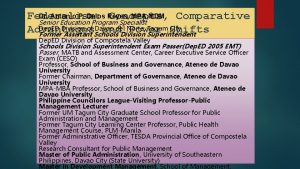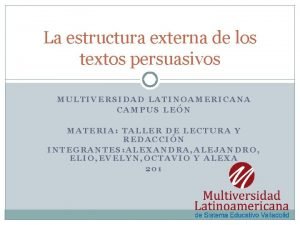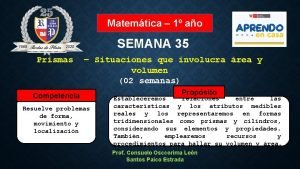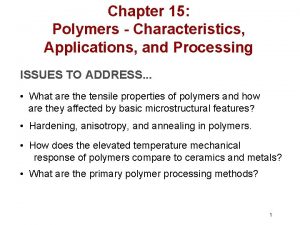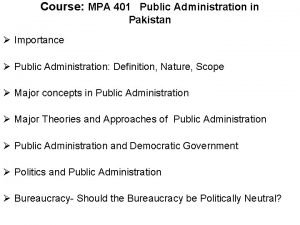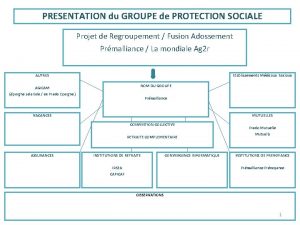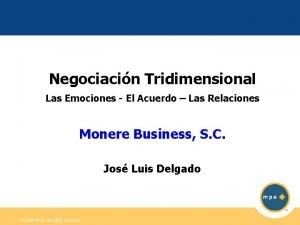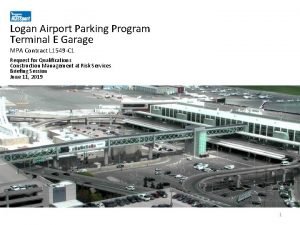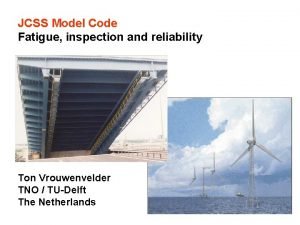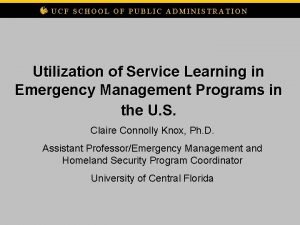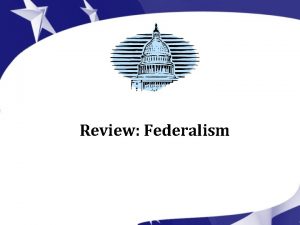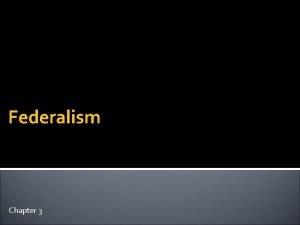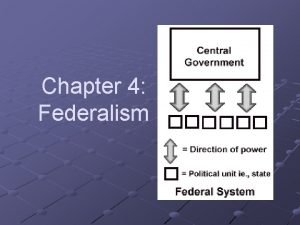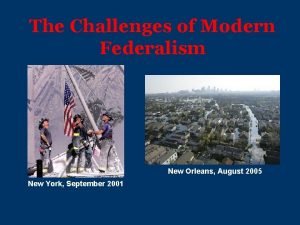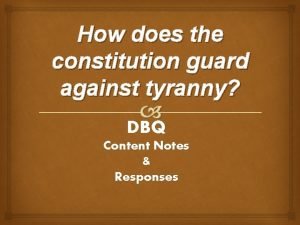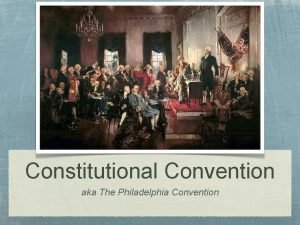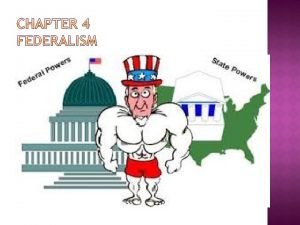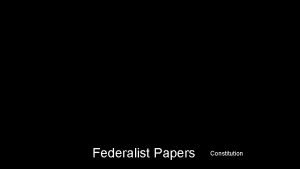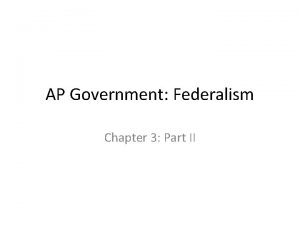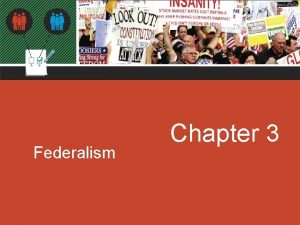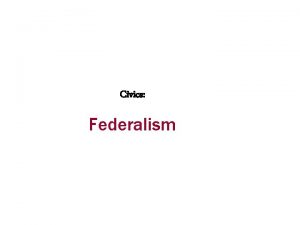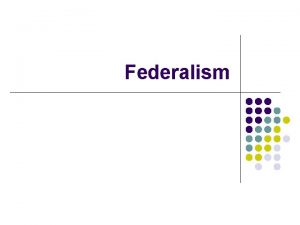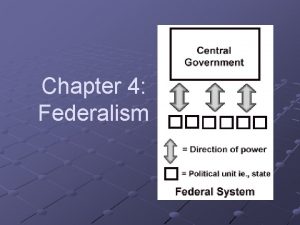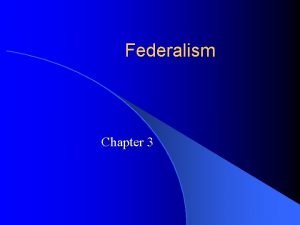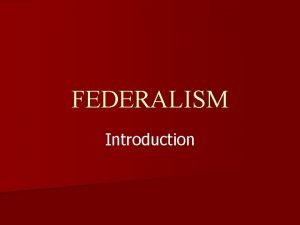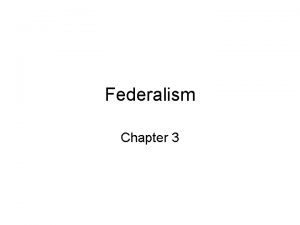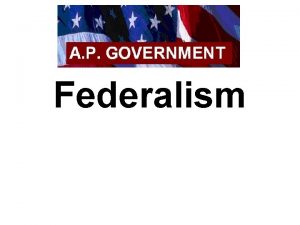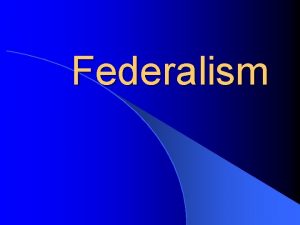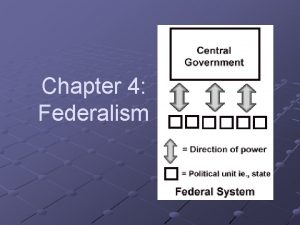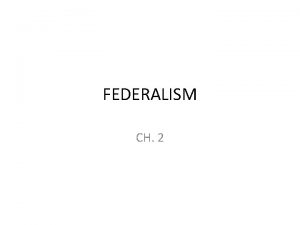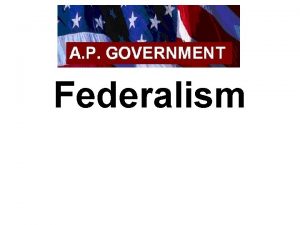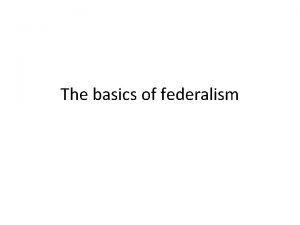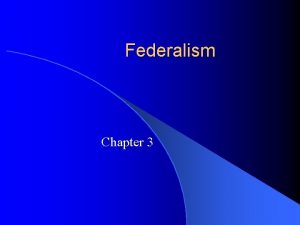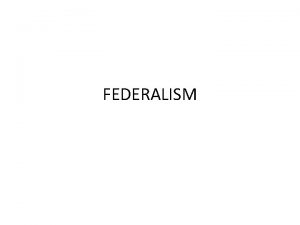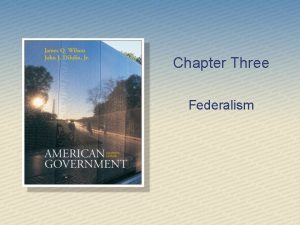Dr Antonio P Delos Reyes MPA MDM Federalism









































- Slides: 41

Dr. Antonio P. Delos Reyes, MPA, MDM Federalism: Concepts, Comparative Senior Education Program Specialist Dep. ED Division of Davao del Norte, Tagum Shifts City Advantages and Power Former Assistant Schools Division Superintendent Dep. ED Division of Compostela Valley Schools Division Superintendent Exam Passer(Dep. ED 2005 EMT) Passer, MATB and Assessment Center, Career Executive Service Officer Exam (CESO) Professor, School of Business and Governance, Ateneo de Davao University Former Chairman, Department of Governance, Ateneo de Davao University MPA-MBA Professor, School of Business and Governance, Ateneo de Davao University Philippine Councilors League-Visiting Professor-Public Management Lecturer Former UM Tagum City Graduate School Professor for Public Administration and Management Former Tagum City Learning Center Professor, Public Health Management Course, PLM-Manila Former Administrative Officer, TESDA Provincial Office of Compostela Valley Research Consultant for Public Management Master of Public Administration, University of Southeastern Philippines, Davao City (State University) Master in Development Management, School of Management,

What is Federalism? v. It is a form of government where sovereignty is constitutionally shared between central governing authority and constituent political units called states or regions.

Three Models of Federalism v Dual Federalism assumes states and national government are more or less equals, with each level of government having separate and distinct functions and responsibilities. v Cooperative Federalism, as term implies, involves cooperation by all branches of government. This model views national and state governments as complementary parts of single governmental mechanism, purpose of which is to solve public issues and problems together. v New Federalism shifts from nation-centered federalism to state-centered federalism.

Concept of Federalism v A federal system of government allows political and cultural interests of regional groups to be reflected in the laws governing those groups. v Federalism is a process of unifying power within a cluster of states and decentralizing power within the unified state. v Such concept suggests each identifiable tier of government has unique attributes, challenges and resources, and therefore has comparative advantage in the performance of some functions and in carrying out specific responsibilities for meeting adequately needs of the citizenry.

Main Arguments for Federal System v. Competition of multiple national governments v. Fiscal federalism v. Veto points v. Accountability v. Size of government sub-

Following Madison’s Idea of Federal Structure v. It could be surmised largeness of size and heterogeneity of constituency leads to greater transparency, greater publicity, and more effective political competition. If so, the ideal of political accountability depends upon political structures that may be maintained at local level.

Philosophy of Federalism v Federalism is a system of shared sovereignty between two levels of government, one national and one subnationaloccupying the same geographic region. v For system to be truly federal, powers of both national units (central government) and sub-national units (state government) must be specified and limited. v The appeal of federalism retains state powers and local traditions while establishing strong national government capable of handling common problems, such as national defense. A federal form of government also furthers goal of creating division of powers.

Federation as Institutional Arrangement v Federation is a specific organizational form which includes structures, institutions, procedures and techniques. v Somehow, federation involves regional economic and political integration. v Intergovernmental cooperation to full integration of sovereign states under stronger federal government.

Some Federal Models v Westminster Model such as Canada (Constitutional Monarchy) v Constitutional Federal Republic ( United States of America) v Hybrid Model of Germany-Federal System v Autonomous Regions of Spain v Constitutional Monarchy of Malaysia v Cantons of Switzerland v Commonwealth of Australia-Federal Government and States

Fundamental Issues of Federalism v How much power should federal government have and state government rings always the bell of public discussion. v In what manner allocation, taxing and regulatory powers should be distributed among orders of government. v What is the future design of federal government and how it looks like according to political, social, economic, geographical and ethnic considerations.

Prerequisites for Federalization v. Security v. Prosperity v. Commonness or Familiarity v. Geographic Proximity

Division of Powers and Responsibilities v National government focuses only on interests with nationwide bearing: foreign policy and defense, for example. v Autonomous regions or states, divided further into local government units, will have primary responsibility over developing industries, public safety, education, healthcare, transportation, recreation, and culture. These states will have more power over finances, development plans, and laws exclusive to their jurisdiction.

Powers Delegated to Federal Government v Declare war v Create and maintain armed forces v Establish foreign policy v Regulate interstate and foreign trade v Make copy right and patent laws v Establish post office v Coin money and punish counterfeiters Federalism v. Raise taxes v. Provide public welfare v. Criminal justice v. Borrow money v. Charter banks v. Build roads Powers Reserved to States v. Establish and maintain schools v. Regulate trades within states v. Conduct elections v. Provide for public safety v. Provide welfare and public health v. Establish local governments

Structural Characteristics of Federations v Two orders of government, each in direct contact with its citizens; v Constitutional sharing of legislative and executive powers, and sharing of revenues between two orders of government to ensure each sector of true autonomy; v Designated representation of regional opinions (usually the Upper Chamber or Senate); v Supreme written constitution; v Arbitration mechanism like federal courts or referendum to resolve intergovernmental disputes; v Procedures and institutions designed to facilitate intergovernmental collaboration in cases of shared domains or inevitable overlapping of responsibilities.

In most federal systems, constituent units are considered to be equal and have same legislative powers. v Asymmetric division of powers in order to reflect differences among constituent units. These differences can be territorial, demographic, linguistic, cultural or religious. v One approach consists of increasing federal government's authority in regions where state's or province's capacity to exercise legislative authority is less advanced or is temporarily undermined. v Another approach is to provide one or several states or provinces more autonomy than others in order to protect distinctive characteristics and interests of those states affected. Malaysian system illustrates this level of autonomy for states of Sabah and Sarawak.

Countries That Have Federal System Today Country Argentina Australia Austria Brazil Canada Ethiopia Germany India Malaysia Mexico 112. 5 Nigeria Pakistan Switzerland United States Venezuela Source: Central Intelligence Agency, 2014) Population Size (In Millions) 41. 3 21. 5 8. 2 201. 1 33. 8 88. 0 82. 3 1, 173, 1 26. 2 152. 2 177. 3 7. 6 310. 2 27. 2

Principal Types of Decentralized Arrangements v Delegation: Allocation of power by the center to other levels of government in what remains essentially unitary state, in which center retains authority to withdraw delegated power or to direct its use. v Devolution: Conferral of legislative and executive and sometimes judicial power on other levels of government giving them substantial autonomy, without complete surrender of, formal control by the center. v Regional autonomy: Conferral on one or more regions of greater degree of self-governing authority than is conferred on other parts of the state. v Federation: Division of governing authority between the centre and one or more other orders of government giving each of them final autonomy in their own areas of responsibility.

The Proposed Federal Government of the Philippines v Philippine Senate Resolution No. 10 (Filed on April 23, 2008 by Senator Aquilino Q. Pimentel Jr. et. al. ) proposes for the shift from unitarypresidential form to federal system of government. v The proposed new government system establish Federal Republic of the Philippines. to

Federal policy to accelerate economic development. v It is a policy of State to accelerate country's economic development, among other things, by converting the nation into Federal Republic with 11 States in addition to Federal Administrative Region of Metro-Manila thereby enabling them to establish their own centers of finance and development and help dissipate the causes of unrest and rebellion in the land.

Federal Congress v Federal legislative power is vested in Congress composed of Senate and House of Representatives. v Every State shall be represented by six senators elected by qualified voters in state-wide elections (75 Senators). v Citizens overseas shall be represented by nine senators (9) elected by qualified voters working or residing in foreign countries as defined by law. v House of Representatives shall be composed of not more than three hundred fifty (350). v Fifty representatives shall be elected through party-list system of registered federal or regional sectoral parties or organizations.

Executive power is vested in the President of the Federal Republic. v There shall be Vice-president who shall have same qualifications and be elected with the President as prescribed by Federal Constitution. v The President and the Vice-president shall be voted as a team. v The vote for presidential candidate shall automatically be counted as vote for his or her vice presidential candidate if the latter belongs to same party, aggrupment or coalition of parties as the former does. v A vote for vice presidential candidate in a ballot that does not contain vote for presidential candidate shall be counted automatically as vote for the presidential candidate who is officially the running mate of vice presidential candidate concerned.

Federal Supreme Court v Supreme Court shall exercise powers and discharge functions vested upon it by the Constitution. v Supreme Court shall assign division of Intermediate Appellate Court to hold office permanently in every State. v Supreme Court shall assign division of Sandiganbayan to hold office in Federal Administrative Region; the State of Northern Luzon; the State of Minparom; the State of Central Visayas, and the State of Northern Mindanao. Division of Intermediate Appellate Court to hold office permanently in every State. v Members of Supreme Court and Judges of lower courts shall be appointed by President from a list of, at least, three nominees prepared after appropriate public hearings by Integrated Bar of the Philippines and approved by Commission on Appointments pursuant to its rules.

State Legislature v Every State shall have unicameral legislature. v Every State Legislature shall be composed of three representatives for each province and each city located within territorial boundaries of State who shall be elected by members of Sangguniang Panlalawigan and Sangguniang Panlunsod from among their members. v In addition, three representatives coming from sectors of farmers, fisherfolk and senior citizens shall be nominated and appointed as provided for by law. v One shall be nominated by majority vote of the opposition or coalition of opposition parties.

Sectoral Representatives v Sectoral representation shall be appointed by State Governor within one week after submission of nominations to his or her office by Sangguniang Panlalawigan and the Sangguniang Panlungsod concerned. In the succeeding sectoral representation, the manner of election shall be provided by state legislature. v Any member of State Legislature may be recalled by majority vote of members of the Sangguniang Panlalawigan or Sangguniang Panlungsod concerned.

State Executive Department v State executive power is vested in the State Governor. v There shall be State Vice-Governor who shall have same qualifications as the State Governor. v The power of the President to exercise general supervision over local government units applies only to the States.

Tax Revenue Sharing among the Federal and State Governments v All revenues and taxes collected by local government units or by national government agencies in accordance with Local Government Code of 1991, Republic Act No. 7160, shall be divided in the following manner: twenty percent (20%) shall accrue to Federal Government and eighty percent (80%) to the States. v Thirty percent (30%) shall pertain to the State concerned and seventy percent (70%) shall be apportioned among provinces, cities, municipalities and barangays according to formula stated in Local Government Code of 1991.

Here's how the Philippines may look like as laid out in Senator Pimentel's 2008 Joint Resolution Number 10.

Vital Significance of Federalism v Locals v More decide for themselves. power over funds, resources. v Promotes v Possible specialization. solution to Mindanao conflict. v Decongestion of Metro Manila. v Lessen dependence on Metro Manila. v Brings government closer to the people. v Encourages competition.

Fiscal Disparity v. Through fiscal autonomy for state governments, federalism will more evenly distribute country's wealth. In 2015, 35% of national budget went to Metro Manila even if it represents only 14% of the Philippine population.

Advantages of Federalism v Distribution of Power v Competition v Balance v Diversity v More democracy v Citizen-oriented v Identity v Autonomy v Unique development

Federalism promotes more democratic space for decision making at the local level. v Diversity of cultures, resources, needs and priorities which exist among states is respected and variations in laws and rules are recognized to accommodate differences. v Federalism permits experimentation and adaptation. v Intergovernmental cooperation is encouraged with efficient and effective use of executive, legislative and judicial resources based on comparative advantages of levels of government. v Citizens of each state are given greater stake in political decision making.

US Constitutional Federal Republic v United States is based on Constitution which is the supreme law. v As federal, central or federal government shares responsibility and powers with state governments and local governments. v As republic, ultimate power within the American system rests with the people. v Federal and State Governments Structure: Executive, Legislative and Judiciary

The Case of Federal and Centralized Government v India: A national multiparty coalition formed government following elections of 2004. Federalism has facilitated multiparty competition and politics of coalition-building, as smaller parties gain credibility and expand electoral support within each state. India’s federal structure has stimulated remarkable capacity for innovation, for example in terms of diverse strategies of economic policy or in language policy. v Bangladesh: By contrast, Bangladesh state has always centralized power. The two major parties in the country remain in confrontational mode under dynastic leaders, gaining power from patron-client relationships which protect and reward supporters. Intolerance, corruption and malfeasance are rife. Deep-seated political instability ensued consequential of highly centralized political control.

French Fifth Republic of France has semi-presidential style of parliamentary government characterized by dual executive: executive power is being shared by President of Republic and Prime Minister. v The President is Head of State and is elected for five years by direct universal suffrage. His functions and powers include being arbiter of Constitution, presiding over Cabinet meetings, promulgating laws, calling for referendums, dissolving Parliament, being Commander of armed forces, and negotiating or ratifying treaties. v The Prime Minister is Head of Government, who is appointed by President after legislative election is held for National Assembly. His functions and powers include directing actions of government, being responsible for national defense, ensuring execution of laws, and exercising regulatory and appointment powers. He is to form Council of Ministers which shall help him to deliberate policies and decisions. v The French Parliament is bicameral, consisting of National Assembly and Senate. The Parliament makes laws, controls government budget and oversees government policy. National Assembly Deputies are elected by direct universal suffrage while Senators are indirectly elected by electoral college. Only National Assembly can compel government to resign when it produces motion of censure or vote of no confidence. v

Argentina: The Great Influence of Provincial Actors v Federal democracy with presidential form of government and bicameral legislature. Federation consists of 23 provinces and a semi-autonomous federal capital. There were 14 provinces at the time original Constitution was signed in middle of nineteenth century indicating provinces are parties to constitutional compact: they pre-existed and constituted national government. v In these exchanges, president and provincial actors trade support for policies devised at national level for fiscal transfers. v Congress is seldom arena where such transactions take place. Instead, it formalizes deals President, provincial governors and interest groups strike in informal arenas. v Provincial viability is sufficient condition to be player in national electoral politics.

Political Regime of Malaysia v Malaysia is a federal state which consists of 13 states and 1 federal territory (Wilayah Persekutuan) with three components, city of Kuala Lumpur, Labuan, and Putrajaya. v The chief of state is the King who is chosen based on principle of rotation among 9 Sultans’ at the Sultans’ Conference. The tenure is 5 years, and its position is ceremonial. The head of government is the Prime Minister who must be member of lower house.

Malaysia: Westminster Parliamentary System v Malaysia has bicameral Parliament consisting of nonelected upper house and elected lower house. v The upper house has 70 seats, of which 44 are designated by the King and 26 appointed by state parliaments. The lower house has 222 seats, all of which are occupied by those who won by direct election. v Political regime of Malaysia can be defined as pseudo-democracy with Malay-dominant political regime backed by Constitution, enduring suppression of civil rights to criticize government, and defacto one-party system.

Basic Elements of Westminster System v Head of state, different from head of government, and who may possess reserve powers, which are not normally exercised, and whose role is largely ceremonial. This is a monarch or his governor general. v Head of government usually a Prime Minister or Premier or First Minister who is appointed by head of state, by convention, must have support of majority of members of Parliament. v Elected legislature, or system in which one house is elected and the other appointed. v Lower House can dismiss a government. v Parliamentary privilege, which allows legislature to discuss any issue deemed relevant, without fear of consequences stemming from defamatory statements or records.

Contingent on Choice of Constitutional Institutions v Whether a country becomes unitary or federal depends partly on a country’s colonial heritage, its size and heterogeneity, and on patterns of government that obtain in a regional or historical context. v In some instances, for example, federal institutions have been chosen because of their anticipated success in resolving conflict among heterogeneous groups (e. g. , Canada, India, Switzerland, the United States).

David Hume once said: v“In a large government, which is modeled with masterly skill, the parts are so distant and remote, that it is very difficult, either by intrigue, prejudice, or passion, to hurry them into any measures against public interest. ”

End of Presentation and Thank You
 Antonio delos reyes
Antonio delos reyes Colegio delos
Colegio delos Signos y simbolos de la orden sacerdotal
Signos y simbolos de la orden sacerdotal Que son los textos persuasivos
Que son los textos persuasivos Desespiralização
Desespiralização Misiones se hace con las manos de los que dan
Misiones se hace con las manos de los que dan Delos 78
Delos 78 Delos emmons
Delos emmons Sten delos
Sten delos Textos expositivos caracteristicas internas y externas
Textos expositivos caracteristicas internas y externas Al=pb x h
Al=pb x h Mpa
Mpa Project server 2003
Project server 2003 Allianz cern mpa
Allianz cern mpa 170 mpa
170 mpa Mpa baseball
Mpa baseball Public administration courses in pakistan
Public administration courses in pakistan Fusion malakoff mederic humanis
Fusion malakoff mederic humanis Mpa de empatia
Mpa de empatia 인장강도 mpa
인장강도 mpa Byu mpa
Byu mpa Alaska mpa
Alaska mpa Cern users office
Cern users office Sifat sifat mekanik beton
Sifat sifat mekanik beton Garage mpa
Garage mpa Uncw graduate programs
Uncw graduate programs Mpa forum
Mpa forum 40 mpa
40 mpa Allianz cern mpa
Allianz cern mpa 25 mpa concrete mix
25 mpa concrete mix Mpa
Mpa Ucf service learning
Ucf service learning Full faith and credit
Full faith and credit Types of federalism
Types of federalism Chapter 4 federalism
Chapter 4 federalism Dual federalism political cartoon
Dual federalism political cartoon Dbq how did the constitution guard against tyranny
Dbq how did the constitution guard against tyranny Federalism in the constitution
Federalism in the constitution Federalism powers divided
Federalism powers divided Federalism in the constitution
Federalism in the constitution Example of concurrent powers
Example of concurrent powers Fiscal federalism definition ap gov
Fiscal federalism definition ap gov
